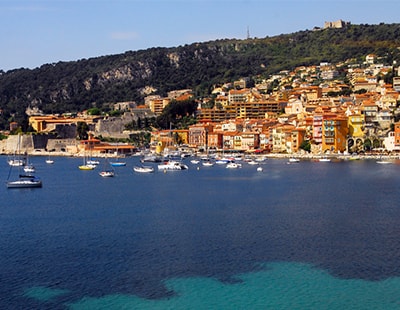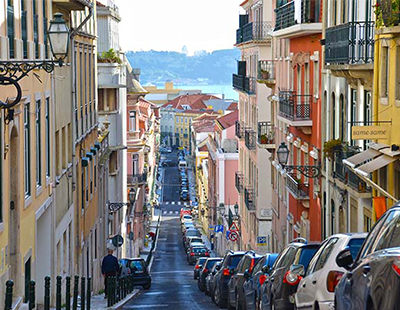Meanwhile, Middle Eastern buyers have been active in the South of France while Paris has seen an increase in the number of buyers from the US and South East Asia.
In the capital, prime prices are set to be further boosted by the Grand Paris Project – set to be Europe’s largest infrastructure project over the next 10 years – and by the 2024 Summer Olympics.
Record number of sales achieved
In May 2019, a record number was achieved for resales. Some 994,000 sales completed over the previous year, a huge rise from the low of August 2009 when sales fell to 564,000 per annum during the global financial crisis.
Knight Frank expects resale transactions in France to surpass one million sales for the first time by the end of 2019. The country’s growing ‘wealth population’ and improving market sentiment are translating into stronger demand for luxury property, with Paris leading the charge with sales and prime prices picking up since early 2017.
In 2018, this confidence spread to France’s regional markets - first Provence and the French Riviera, then Gascony and the French Alps. According to Knight Frank data, enquiries for French homes rose year-on-year by 33% and sales by 63% in 2018, with this momentum and positive sentiment continuing in 2019. A number of record prices were witnessed in Paris and on the French Riviera in the first half of this year.
Improved accessibility – particularly to Provence, which, thanks to the Eurostar line to Avignon that opened in 2017, put the region within a six and half hour train ride of London St Pancras – has made France more appealing to second home buyers than ever before.
As well as the Grand Paris Project, which is set for completion between 2024 and 2030 and will lead to four new lines and 68 new stations, other large-scale infrastructure projects include the upgrading of Marseille Airport (due to be completed in 2027) and the planned construction of a number of proposed high-speed train lines, including Bordeaux to Toulouse, Marseille to Nice, Lyon to Turin and Paris to Le Harve.
Why should investors consider France?
Knight Frank says new homes in France come with added appeal, assuming buyers adhere to certain conditions. TVA (VAT) of 20% is refundable on newly-built or off-plan properties, while transfer tax is limited to 2% instead of the usual 7% for resale properties.
Equally, France’s wealth tax has only applied to real estate since September 2017 (as opposed to all asset classes). With record low interest rates on offer, many purchasers are choosing to take out finance to reduce their tax liability. At present, a 70% loan-to-value mortgage is not unusual, with rates around 2% currently attainable.
Interestingly, approximately 70% of Knight Frank’s second home buyers in France now aim to rent their property – a noticeable shift from a decade ago.
Buyers can now also be much more informed before investing abroad, with the digital revolution of recent years allowing buyers to have all manner of data at their fingertips. Even before arranging a viewing, many buyers carry out due diligence on the area in which they are investing, drilling down into achieved prices, rental rates and seasonal occupancy levels at a local level. This can all help investors to receive better returns and capital gains over time.
Why France?
Apart from the obvious – the wine, the food, the culture, the climate and the architecture – France’s solid economic growth (GDP is expected to grow by 1.2% across 2019, higher than the UK, Germany, Italy, Belgium, Sweden and Switzerland) and attractiveness to tourists make it an appealing prospect. In addition, good transport links, excellent international schools and a transparent legal system make it something of an investor’s dream.
France really can claim, meanwhile, to be a tourist hotspot – it was the most visited country in the world with more than 89 million visitors in 2018, offering a reliable pool of rental demand for second home owners – while the Macron government’s recent tax changes and labour reforms suggest a pro-investment stance when it comes to affluent investors.
What’s more, a low interest rate environment – which is expected to continue, with the European Central Bank set to cut rates further in the latter part of this year – and a second round of quantitative easing being on the cards means investors can take advantage of cheap finance.
Investors are also likely to be attracted by its accessibility and connectivity – with easy access to the UK, Spain, Italy, Switzerland and Germany, and the presence of Europe’s second largest airport hub in the form of Charles De Gaulle Airport. Equally, train, bus and car links tend to be fast and reliable, while Eurostar provides very strong links to the UK and other parts of Europe.
People may also be encouraged to buy in France, Knight Frank says, because of its strength as a commuter base. Fast broadband speeds, strong connectivity and an increasing move towards flexible working means that weekly commutes from the South of France or Paris to London, Geneva or Brussels are now a more realistic option.
France is, of course, best known for being a huge culinary hotspot – the birthplace of fine dining, in fact – and this is reflected by the country being home to 616 Michelin-starred restaurants, comfortably the most of anywhere in the world.
It’s also a largely stable, safe and wealthy country with strong economic fundamentals. It has the second biggest economy in the Eurozone after Germany and unemployment is currently at a 10-year low. There have been issues in France in recent years – with a rise in terrorist attacks, the ongoing yellow vest protests, and controversy surrounding climate change and pensions – but by and large it is still seen as one of the most desirable countries in which to live and invest in.
And when it comes to prime destinations in France, most are witnessing stable or rising prices, according to Knight Frank. In Paris, for example, prime prices grew by 5% in the year to Q2 2019, while in Provence they grew by 1.2% and in Saint-Tropez on The French Riviera by 1%.
Additionally, those hoping to grow their wealth exponentially through property investment may see France as a relatively safe haven, with ‘a tax landscape that is increasingly benign’ thanks to flat rates on dividends and capital gains tax and the aforementioned changes to wealth tax. As a result, France’s wealth population is growing, with it now being home to more than 610,000 millionaires.
This is the sixth largest concentration of any country globally, according to data from GlobalData Wealth Insight, with this figure expected to rise by 22% over the next five years. As a result, a new millionaire will be created in, or move to, the country every three hours between 2018 and 2023.
You can read the full report here.








.jpeg)
.png)

.jpg)








Join the conversation
Be the first to comment (please use the comment box below)
Please login to comment